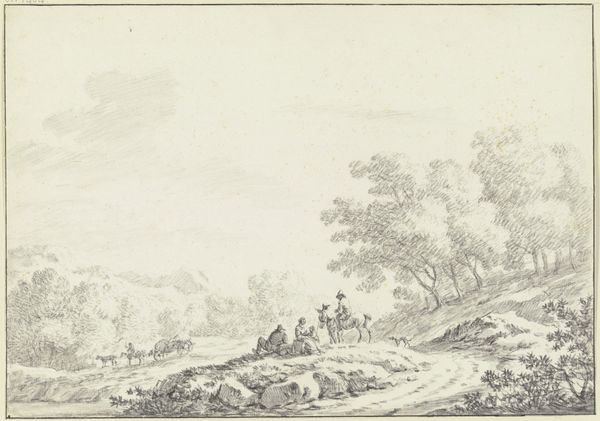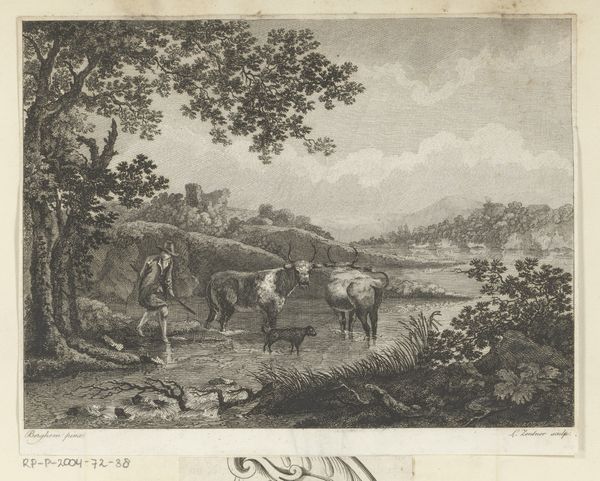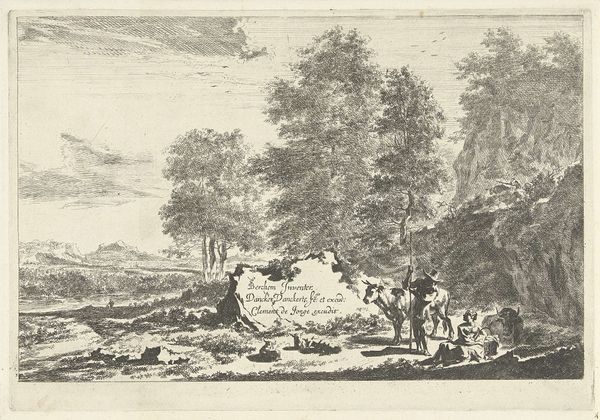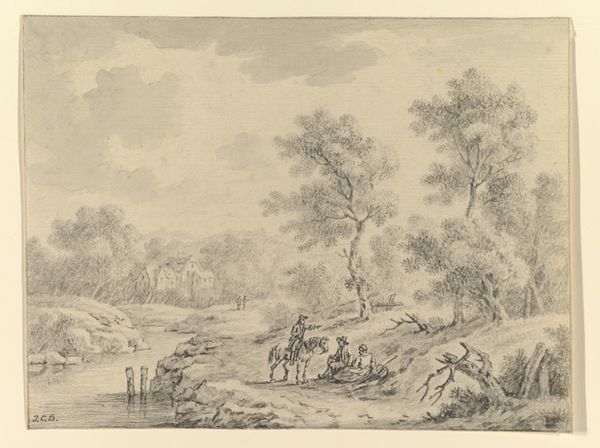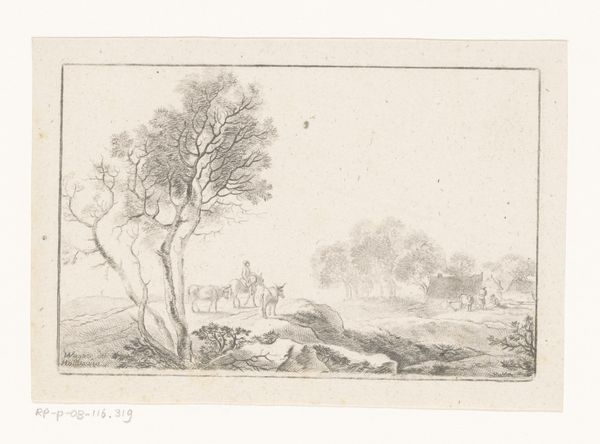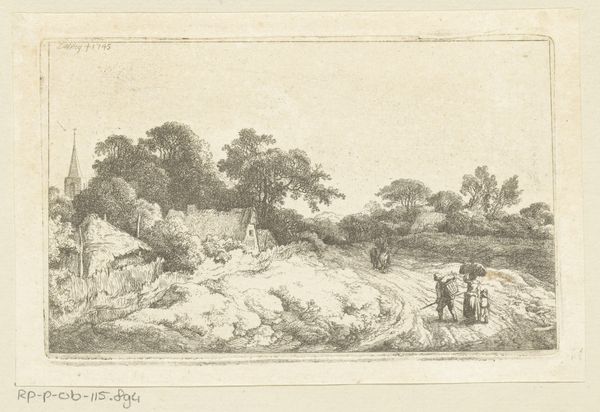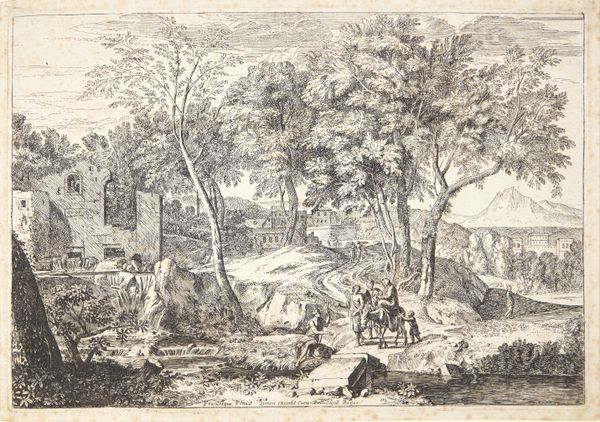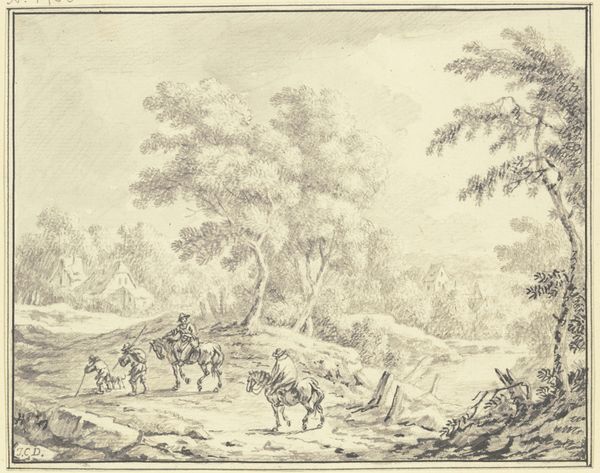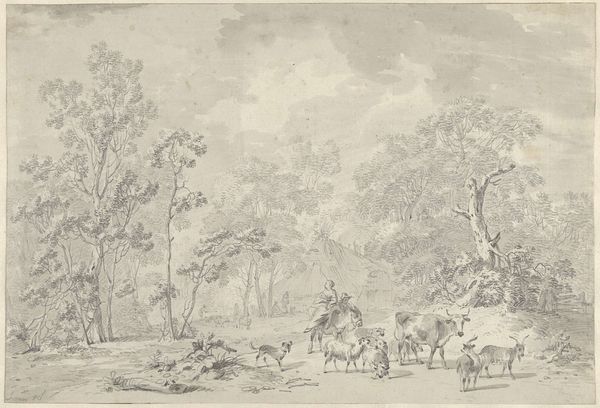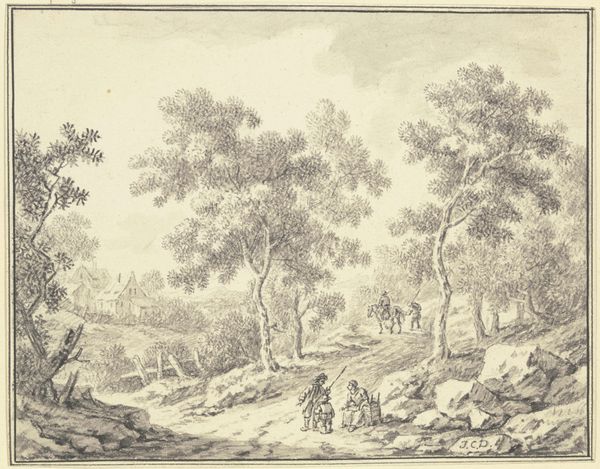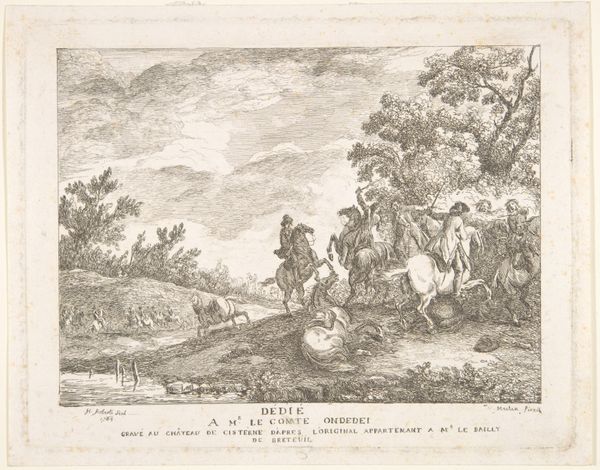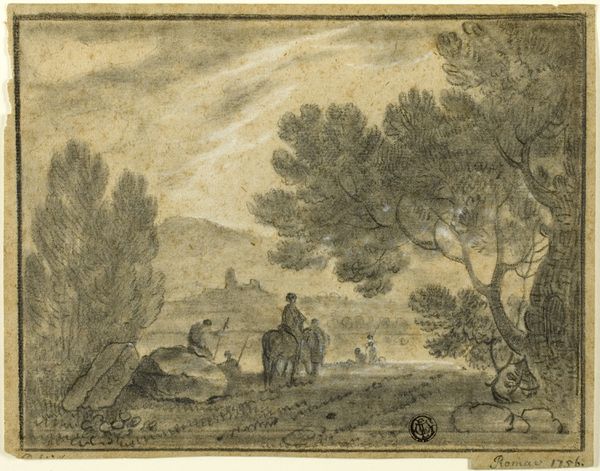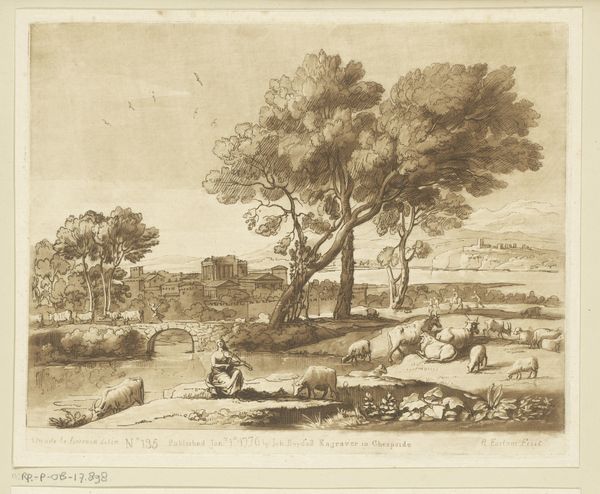
Rustende reiziger langs kant van de weg pratend met man met hond 1739 - 1804
0:00
0:00
etching
#
narrative-art
#
neoclassicism
#
etching
#
dog
#
landscape
#
etching
#
15_18th-century
#
genre-painting
Dimensions: height 91 mm, width 134 mm
Copyright: Rijks Museum: Open Domain
Editor: This is “Rustende reiziger langs kant van de weg pratend met man met hond,” or “Resting traveler by the roadside talking to a man with a dog,” an etching made by Johann Andreas Benjamin Nothnagel between 1739 and 1804. It feels like a fleeting, everyday encounter captured in incredibly delicate lines. What strikes you about this piece? Curator: Well, immediately I consider the materiality of etching itself. The process, biting into the metal plate with acid, determines the image. Think of the labor involved, the specific skills and the tools that shaped those lines. This wasn’t simply “drawing”; it was an industrial, replicable process reflecting a shift in artistic production. Editor: So, the choice of etching says something about its intended audience or purpose? Curator: Precisely. Etchings democratized image-making. Consider the socio-economic implications. These aren't unique, precious objects. They're multiples, disseminated widely. Who consumed these images? What purpose did they serve in the everyday lives of the burgeoning middle class? This seemingly simple scene reflects changing modes of production and consumption. The dog itself -- could it be seen as a kind of commodity too, a symbol of property and rural labour? Editor: That’s interesting; I hadn't considered the etching process as a reflection of social change. It makes me think about how even a rustic scene like this is connected to broader economic forces. Curator: It forces us to confront how art materials are not neutral, but are laden with significance – economic, social, and historical. Understanding that significance unveils richer layers of meaning than a simple aesthetic appreciation. Editor: Thanks for opening my eyes to the material realities that produced this seemingly simple image. Curator: Indeed, recognizing art's engagement with processes, labor, and economies broadens the historical dialogue it provides.
Comments
No comments
Be the first to comment and join the conversation on the ultimate creative platform.
